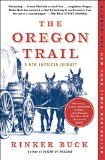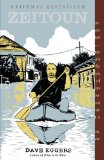Summary | Excerpt | Reading Guide | Reviews | Beyond the book | Read-Alikes | Genres & Themes | Author Bio

A masterful portrait of a tragic crucible in the settlement of the American heartland - the 'Children's Blizzard' of 1888.
The gripping story of an epic prairie snowstorm that killed hundreds of newly arrived settlers and cast a shadow on the promise of the American frontier.
January 12, 1888, began as an unseasonably warm morning across Nebraska, the Dakotas, and Minnesota, the weather so mild that children walked to school without coats and gloves. But that afternoon, without warning, the atmosphere suddenly, violently changed. One moment the air was calm; the next the sky exploded in a raging chaos of horizontal snow and hurricane-force winds. Temperatures plunged as an unprecedented cold front ripped through the center of the continent.
By Friday morning, January 13, some five hundred people lay dead on the drifted prairie, many of them children who had perished on their way home from country schools. In a few terrifying hours, the hopes of the pioneers had been blasted by the bitter realities of their harsh environment. Recent immigrants from Germany, Norway, Denmark, and the Ukraine learned that their free homestead was not a paradise but a hard, unforgiving place governed by natural forces they neither understood nor controlled.
With the storm as its dramatic, heartbreaking focal point, The Children's Blizzard captures this pivotal moment in American history by tracing the stories of five families who were forever changed that day. Drawing on family interviews and memoirs, as well as hundreds of contemporary accounts, David Laskin creates an intimate picture of the men, women, and children who made choices they would regret as long as they lived. Here too is a meticulous account of the evolution of the storm and the vain struggle of government forecasters to track its progress.
The blizzard of January 12, 1888, is still remembered on the prairie. Children fled that day while their teachers screamed into the relentless roar. Husbands staggered into the blinding wind in search of wives. Fathers collapsed while trying to drag their children to safety. In telling the story of this meteorological catastrophe, the deadliest blizzard ever to hit the prairie states, David Laskin has produced a masterful portrait of a tragic crucible in the settlement of the American heartland.
I started reading The Children's Blizzard out of a sense of duty to the publisher, so I could hold my head up and honestly say that I'd given it my best shot, but just like the reviewer for Entertainment Weekly, I ended up hooked by the gripping story, and read it cover to cover in one evening, despite the fact that much of this time was spent in an increasingly cold bathtub of water...continued
Full Review
 (253 words)
(253 words)
(Reviewed by BookBrowse Review Team).
According to David Laskin's final chapter, 'nearly 70% of the counties in the Great Plains states have fewer people today than they did in 1950. These days nearly one million acres of the plains are so sparsely populated that they meet the condition of frontier as defined by the Census Bureau in the nineteenth century.... and Indian and buffalo populations have now reached levels that the region has not seen since the 1870s. The white farmers and townspeople who remain would shun you for daring to say it, but in large stretches of the prairie it's beginning to look like European agricultural settlement is a completed chapter of history.'

If you liked The Children's Blizzard, try these:

by Rinker Buck
Published 2016
An epic account of traveling the length of the Oregon Trail the old-fashioned way—in a covered wagon with a team of mules, an audacious journey that hasn't been attempted in a century.

by Dave Eggers
Published 2010
The true story of one family, caught between America’s two biggest policy disasters: the war on terror and the response to Hurricane Katrina.